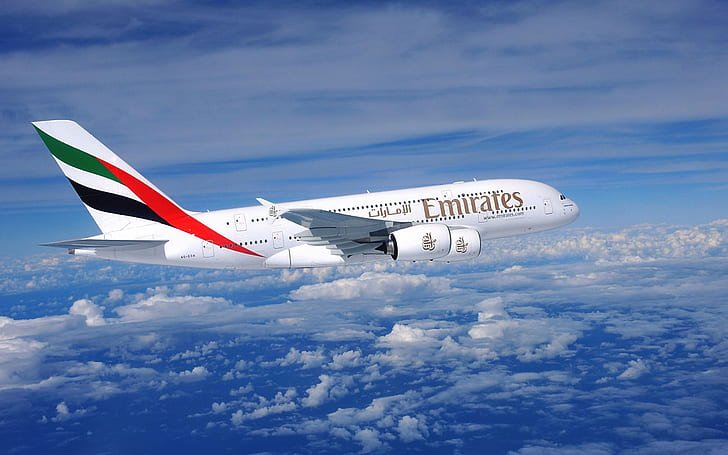Over the past two decades, three Middle Eastern airlines have ascended to the pinnacle of global aviation: Emirates, Etihad Airways, and Qatar Airways. These carriers have redefined luxury air travel, set new benchmarks in operational efficiency, and transformed their home cities into pivotal global hubs. Based in Dubai, Abu Dhabi, and Doha, respectively, these airlines leverage their strategic geographic locations to connect continents seamlessly.
Each airline has adopted unique strategies to dominate the skies. Emirates, for instance, has focused heavily on long-haul connections, building an extensive network that spans six continents. Qatar Airways differentiates itself with unparalleled service quality and operational efficiency, while Etihad focuses on sustainability and exclusive partnerships to carve a niche. Together, these carriers have reshaped the competitive landscape of the aviation industry, earning accolades and consistently ranking among the top airlines worldwide.
Emirates: A Pioneer in Long-Haul Luxury
Emirates, founded in 1985, stands as the largest airline in the Middle East and one of the most recognizable brands in aviation. As of 2023, Emirates operates a fleet of over 260 aircraft, primarily composed of wide-body Airbus A380s and Boeing 777s. This strategic focus on large aircraft allows the airline to optimize capacity on high-demand long-haul routes. Its extensive network spans more than 150 destinations across six continents, positioning Dubai as a premier global transit hub.
The airline’s hallmark has always been its emphasis on luxury. Emirates’ first-class cabins, featuring private suites and onboard lounges, have redefined premium travel. The carrier also invests heavily in its in-flight entertainment system, ICE, consistently rated the best in the industry. In 2023, Emirates reported annual revenue of $32.6 billion, marking a 42% increase from the previous year, bolstered by the recovery of international travel post-pandemic (source).
From a strategic standpoint, Emirates leverages Dubai’s Open Skies policy, which allows it to expand its network without the constraints faced by other carriers. Additionally, the airline’s partnership with flydubai, a low-cost carrier, enables it to capture both premium and budget-conscious travelers. This dual strategy ensures a steady influx of passengers, fueling its continued growth.
Qatar Airways: Redefining Service Excellence
Qatar Airways, founded in 1993, has earned a reputation for offering unparalleled service. The airline operates a fleet of approximately 250 aircraft, including the state-of-the-art Airbus A350 and Boeing 787 Dreamliner. Known for its meticulous attention to detail, Qatar Airways has been named the World’s Best Airline multiple times by Skytrax, most recently in 2023. Its network spans 170 destinations, strategically connecting Asia, Europe, and the Americas via Doha.
Qatar Airways’ success can be attributed to its focus on premium services and operational reliability. The airline’s Qsuite business class cabins, featuring lie-flat seats and privacy doors, have been hailed as a game-changer in the industry. Furthermore, its hub at Hamad International Airport, consistently ranked among the world’s best airports, enhances the passenger experience significantly. In 2023, Qatar Airways reported revenues of $20.1 billion, driven by strong demand for both passenger and cargo services (source).
In addition to its service quality, Qatar Airways has invested heavily in sustainability. The airline has introduced fuel-efficient aircraft and aims to achieve net-zero carbon emissions by 2050. This commitment to green aviation not only aligns with global sustainability goals but also enhances its appeal to environmentally conscious travelers.
For further insights into Qatar Airways’ achievements, visit the related article on Nippon Business.
Etihad Airways: Optimize Strategic Partnerships
Founded in 2003, Etihad Airways has adopted a distinct strategy centered around sustainability and partnerships. With a fleet of 96 aircraft, including the Airbus A350 and Boeing 787 Dreamliner, Etihad is smaller than its regional counterparts. However, it compensates for its size with a strong focus on niche markets and strategic alliances. The airline serves 70 destinations worldwide, with a focus on Asia, Europe, and North America.
Etihad’s Greenliner program, launched in collaboration with Boeing, underscores its commitment to sustainable aviation. The initiative aims to test and implement innovative technologies to reduce carbon emissions. Additionally, Etihad’s ecoDemonstrator program has positioned it as a leader in green aviation practices. In 2023, the airline reported revenues of $4.1 billion, a testament to its resilience and adaptability in a competitive market (source).
Strategic partnerships also play a crucial role in Etihad’s business model. Its codeshare agreements with airlines like Air France-KLM and American Airlines expand its reach and enhance connectivity for passengers. Furthermore, Etihad’s loyalty program, Etihad Guest, is among the most rewarding in the industry, driving customer retention and brand loyalty.
Performance Snapshot and Future Prospects
Collectively, Emirates, Qatar Airways, and Etihad Airways dominate the global aviation industry, leveraging their strategic hubs and unique business models to connect the world. In 2023, these airlines together accounted for a significant share of global long-haul traffic, with combined revenues exceeding $56.8 billion. The Middle East’s strategic location, situated within an eight-hour flight of two-thirds of the world’s population, remains a critical factor in their success.
Looking ahead, the future appears bright for these carriers. Emirates plans to expand its fleet further with new orders for Airbus A350s, while Qatar Airways is set to increase its network to over 200 destinations by 2025. Etihad, meanwhile, continues to focus on sustainable growth and aims to double its fleet size by 2030. The competitive dynamics between these airlines ensure constant innovation, benefiting travelers worldwide.
In conclusion, the rise of Emirates, Qatar Airways, and Etihad Airways is a testament to visionary leadership, strategic planning, and an unwavering commitment to excellence. As they continue to shape the future of aviation, their success serves as an inspiration for businesses across industries. To learn more about the global aviation industry, visit the aviation section on Nippon Business.


